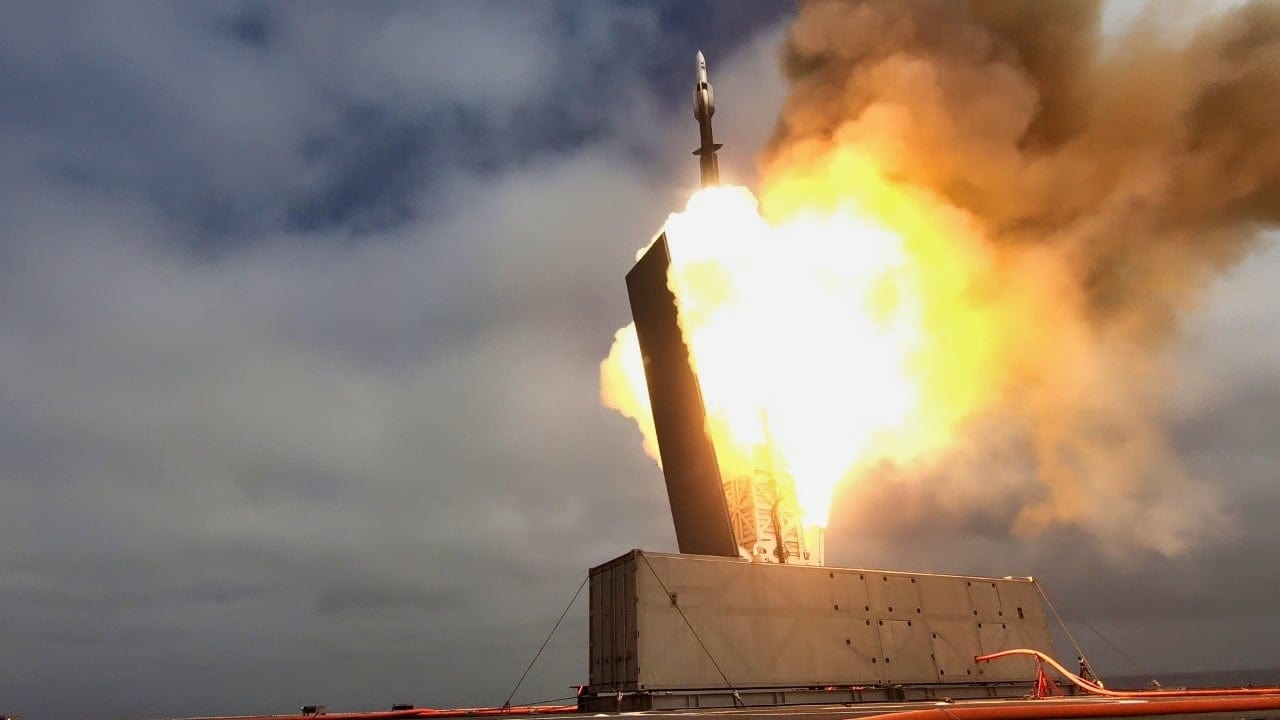In another sign of how crucial missile defense has become in the Pacific, Japan’s navy is getting U.S. SM-6 surface-to-air missiles.
The SM-6 is a potent air defense weapon that can be employed against ballistic missiles as well as aircraft. The Japanese home islands have been under threat of North Korean ballistic missile attack for years, including nuclear-tipped missiles. Should Japan dispatch its navy to defend Taiwan from Chinese invasion, or maintain Japan’s sovereignty over disputed islands in the East China Sea, then Japanese warships would face a deadly array of Chinese weapons, including anti-ship cruise missiles and ballistic missiles.
The $900 million SM-6 sale was approved last month by the State Department’s Defense Security Cooperation Agency, before going to Congress for final approval. The deal includes up to 150 SM-6 Block I missiles, MK 21 Mod 3 Vertical Launch System canisters, and spare parts.
“The proposed sale will improve Japan’s capability to meet current and future threats by allowing the Japan Maritime Self Defense Force (JMSDF) to deploy the latest Standard Missile capabilities from their current and future AEGIS Weapon System (AWS) equipped surface combatants,” DSCA concluded. “The proposed sale will further enhance Japan’s capability to protect Japan and local allied land forces and will significantly improve Japan’s contribution to integrated air missile defense in the Indo-Pacific region.”
Japan is building up a fleet of ships equipped with the American-made Aegis air and missile defense system, a sophisticated array of weapons, sensors and datalinks that dates back to the 1970s. The Ministry of Defense recently ordered two more destroyers, which will increase Japan’s Aegis fleet to 10 vessels.
These vessels would be compatible with the U.S. Navy’s Aegis fleet. The U.S. Navy procured 121 Aegis-equipped Ticonderoga-class cruisers and Arleigh Burke-class destroyers from 1978 to 2024.
Aegis has evolved to become far more than a fleet air defense system. Its anti-ballistic missile capabilities have made it an integral part of national missile defense systems for the U.S. and its allies, working in tandem with land-based interceptors such as the PAC-3 Patriot and Terminal High Altitude Aerial Defense (THAAD). There is even a land-based version – called Aegis Ashore – which has already been deployed to Poland as part of NATO’s missile defense network.
The cutting edge of Aegis is the SM-6 missile, first deployed in 2013 as an extended-range version of the SM-2. The SM-6 has an estimated range of 150 to 200 miles, versus 90 miles for the SM-2. While the SM-2 is still in widespread use as an interceptor against aircraft and anti-ship missiles, the SM-6 goes further with longer range and an onboard radar – based on that found in the AIM-120 air-to-air missile – which allows the SM-6 to hit targets beyond the detection range of shipboard radars.
“The proposed sale of this equipment and support will not alter the basic military balance in the region,” DSCA assured Congress. Broadly speaking, that’s true. Adding 150 Japanese anti-missile interceptors won’t increase the massive superiority of America and its Pacific allies over North Korea, nor substantially diminish the threat from more than 3,000 Chinese ballistic missiles.
Israel’s missile defenses – aided by the U.S., Britain and other nations – scored impressive successes against two mass Iranian missile and drone attacks last year, with Israel claiming a 99 percent interception rate in the April 2024 strike. Achieving similar success in the skies over Taiwan or Japan would be more difficult. China would probably launch a larger strike, using more sophisticated missiles, than Iran.
However, the SM-6 sale does suggest that a multinational missile defense coalition is shaping up in the Pacific. Japan’s Aegis-equipped ships, operating alongside their American counterparts, could shield Taiwan and Japan against Chinese or North Korean attack. Meanwhile, the U.S. has offered to sell 100 Patriot PAC-3 missiles to Taiwan.

USS Savannah (LCS 28) conducts a live-fire demonstration in the Eastern Pacific Ocean utilizing a containerized launching system that fired an SM-6 missile from the ship at a designated target. The exercise demonstrated the modularity and lethality of Littoral Combat Ships and the ability to successfully integrate a containerized weapons system to engage a surface target. The exercise will inform continued testing, evaluation and integration of containerized weapons systems on afloat platforms.
This may not be sufficient to deter China should Beijing follow through on its vows to unify Taiwan with China, by force if necessary. Nor dissuade North Korea from attacking Japan, should North Korean leader Kim Jong Un and his regime feel sufficiently provoked for whatever reason.
But the chance that some of their missiles would be intercepted might give an attacker pause.
About the Author: Michael Peck
Michael Peck is a defense writer whose work has appeared in Business Insider, Forbes, Defense News, Foreign Policy magazine, and other publications. He holds an MA in political science from Rutgers Univ. Follow him on Twitter and LinkedIn

